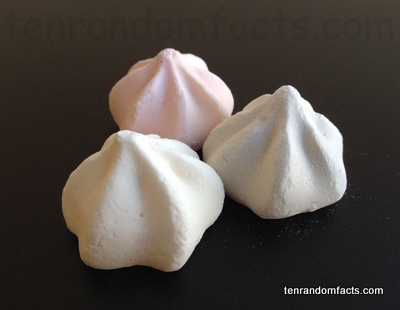Light and airy meringues.
- Meringues are a light weight and traditionally white food made by whipping ingredients, and they are often eaten as a sweet dessert.
- Meringues are made primarily of sugar and egg whites that have been whipped together, and sometimes binders, such as cornstarch; acids, such as cream of tartar; and flavouring, such as vanilla, are included.
- Meringues are typically sweet flavoured and have a crisp outer surface, with either a light chewy or crisp textured interior, and food colouring can be added for decorative effects.
- The earliest known record of the word ‘meringue’, is found in the 1692 cookbook written by the chef François Massialot of France, in Europe, although it is believed that the food has its origins in the 1500s.
- One of the first documented meringue recipes was from an early 1600s recipe book written by Lady Elinor Fettiplace, from England’s now Oxfordshire in Europe, and the recipe was named ‘white biskit bread’.
- The shape of meringues is generally achieved by using spoons or a piping bag, and once formed to the desired shape, they are generally cooked in an oven on a low temperature.
- The primary reason for beating the whites of eggs is to break certain bonds, which causes the mixture to stiffen, and if the sugar is not well incorporated into the mixture by significant beating, it will cause small droplets of moisture to appear on the exterior once cooked, which is known as ‘sweating’.
- There are three main types of meringue: Italian; Swiss; and French; each made using different procedures, and the latter is the most common.
- Meringues can be used as an ingredient in many other desserts, notably tarts, pavlovas, puddings and cakes.
- Meringue never contains fat, as its inclusion would cause the mixture to cave in, although it does contain a significant portion of sugar and protein.
Bibliography:
Meringue, 2014, Wikipedia, http://en.wikipedia.org/wiki/Meringue
Muster D, The Origins and History of the Meringue, n.d., In Mamas Kitchen, http://www.inmamaskitchen.com/FOOD_IS_ART/meringue2.html







